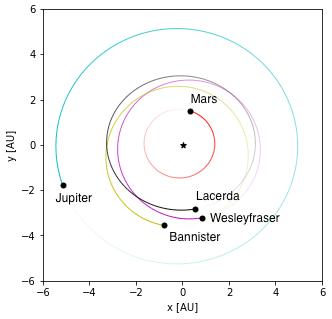Asteroids named after Queen's astronomers
International recognition and a piece of real estate

Asteroids have been named after three astronomers in the Astrophysics Research Centre at Queen's University. Drs Michele Bannister, Pedro Lacerda and Wes Fraser were informed of the honour at the end of the recent Asteroids, Comets, Meteors 2017 Conference in Montevideo, Uruguay. All three asteroids lie out in the asteroid belt between Mars and Jupiter. The QUB astronomers report that none of their asteroids can hit the Earth, which they are pretty happy about.
Dr. Bannister said “My asteroid was discovered in 1979 by astronomer Eleanor Helin, during her surveys of the Solar System with a telescope among the eucalyptus trees and kangaroos at Siding Spring, in Australia. It feels quite special to have a connection through the years to a pioneer who worked at an observatory where I too have spent many nights observing.”
Asteroid (10019) Wesleyfraser is named after Dr. Wes Fraser, who studies the sizes and compositions of objects in the outer Solar system. It orbits 462 million km (286 million miles) from the Sun and takes 5.4 years to orbit. It is 11.4 km across and takes about 10 Earth-days to spin once.
Asteroid (10463) Bannister is named after Dr. Michele Bannister, whose work includes surveys to discover and characterize distant objects in the Kuiper Belt. It orbits 467 million km (289 million miles) from the Sun and takes 5.5 years to orbit. It is 10.9 km across and its day is 4.8 hours long.
Asteroid (10694) Lacerda is named after Dr. Pedro Lacerda, who studies the properties and evolution of Kuiper-belt objects, comets and asteroids. It orbits 414 million km (257 million miles) from the Sun and takes 4.6 years to orbit. It is 11.7 km across and spins once every 7.2 hours.
Asteroids are issued official identification numbers by the International Astronomical Union’s Minor Planet Center, once the asteroids' orbit is precisely known. Naming is then approved by an international committee of astronomers within the International Astronomical Union.
